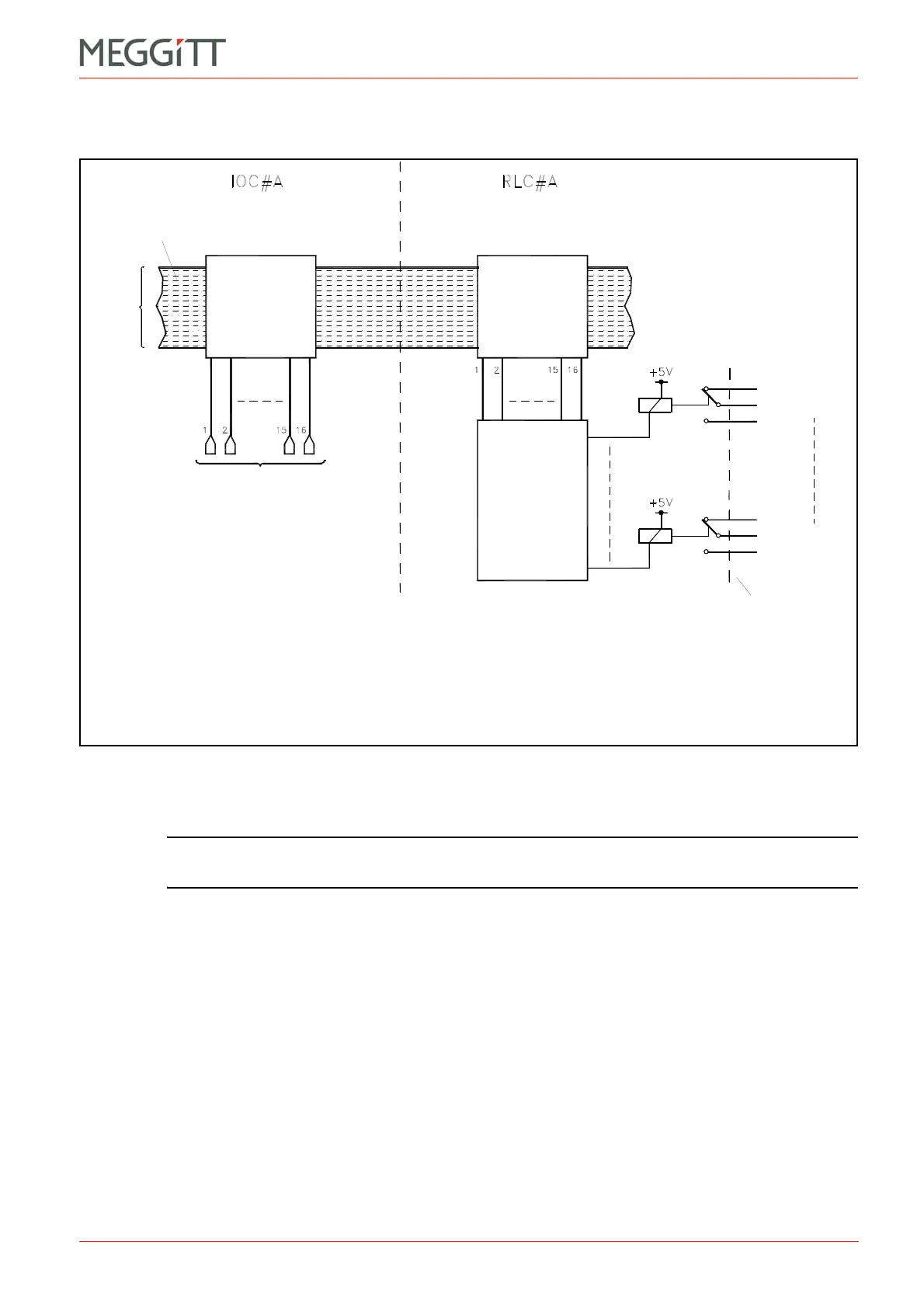VM600 MPS hardware manual (standard version) MAMPS-HW/E 9 - 49
Edition 17 - February 2018
Assigning alarm signals to relays on the RLC16 card
CONFIGURATION OF MPC4 / IOC4T CARDS
Figure 9-35 shows the operating principle when the Raw Bus is used to switch relays.
The allocation of a specific alarm signal (generated by the MPC4 / IOC4T cards) to a control
signal line is done using the VM600 MPSx software.
NOTE: Refer to the relevant manual for further information: VM600 MPS1 software
manual or VM600 MPS2 software manual.
The allocation of a specific Raw Bus line pair to a specific control signal line is done by setting
jumpers on the IOC4T card. The jumper settings are summarised in Table 9-7 and the
position of the relevant jumpers on the IOC4T card is shown in Figure 9-29 with an
explanation of which jumpers correspond to which Raw Bus lines (see “relay selection” on
the left of the figure).
For information on the allocation of a specific Raw Bus line pair to a measurement channel,
see 9.11 Using the Raw Bus to share measurement channel inputs.
The control signal is subsequently routed towards a specific relay on the RLC16 card by
setting a jumper on the RLC16. Additional jumpers on the RLC16 allow the selection of relay
normally energised (NE) or normally de-energised (NDE). The jumper settings are
summarised in Table 9-7 and the position of the relevant jumpers on the RLC16 card is
shown in Figure 9-29.
Figure 9-35: Using the Raw Bus to switch relays
Relay 1
Relay 16
RLC16
panel
Jumpers
to select
NE/NDE
Jumper
matrix
(on RLC16)
Control signals
(see note 1)
Raw
Bus
Notes
1. Specific alarms (A+, D and so on) generated by the corresponding MPC4 card are
attributed to the control lines using the VM600 MPSx software. See Table 9-4 for
information on the normal state of the control signal.
Jumper
matrix
(on IOC)
64 lines
